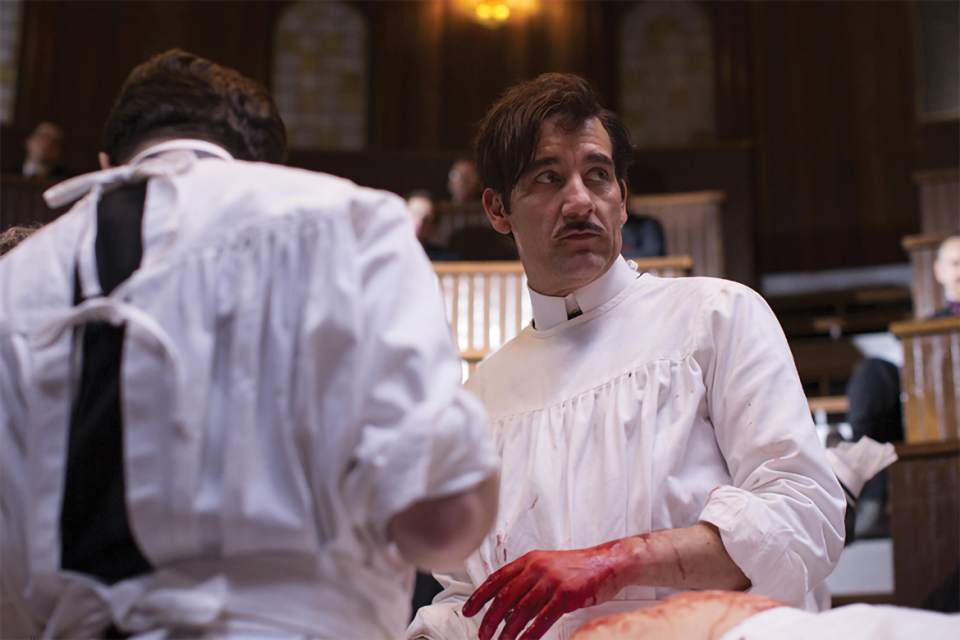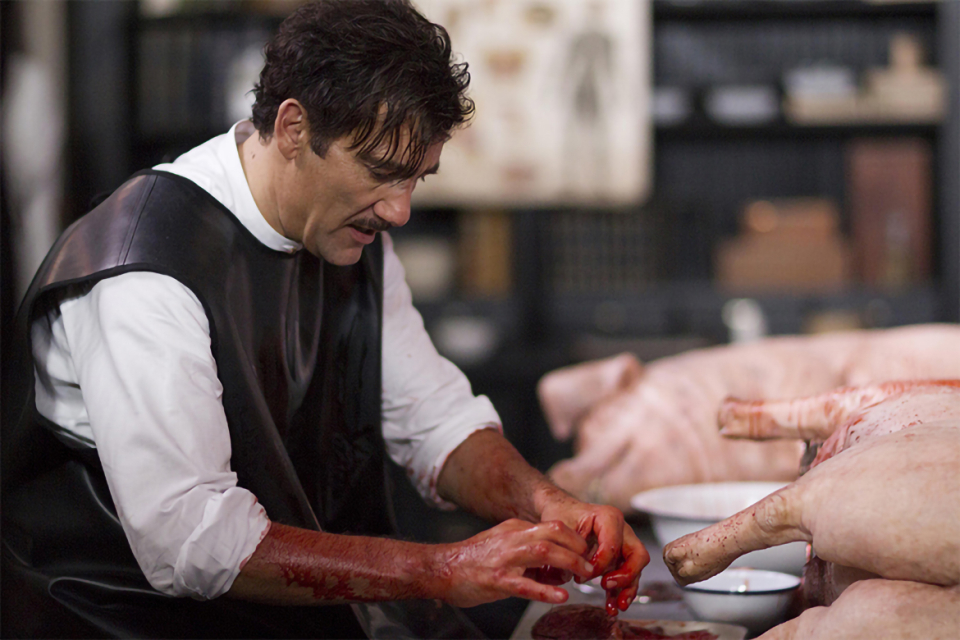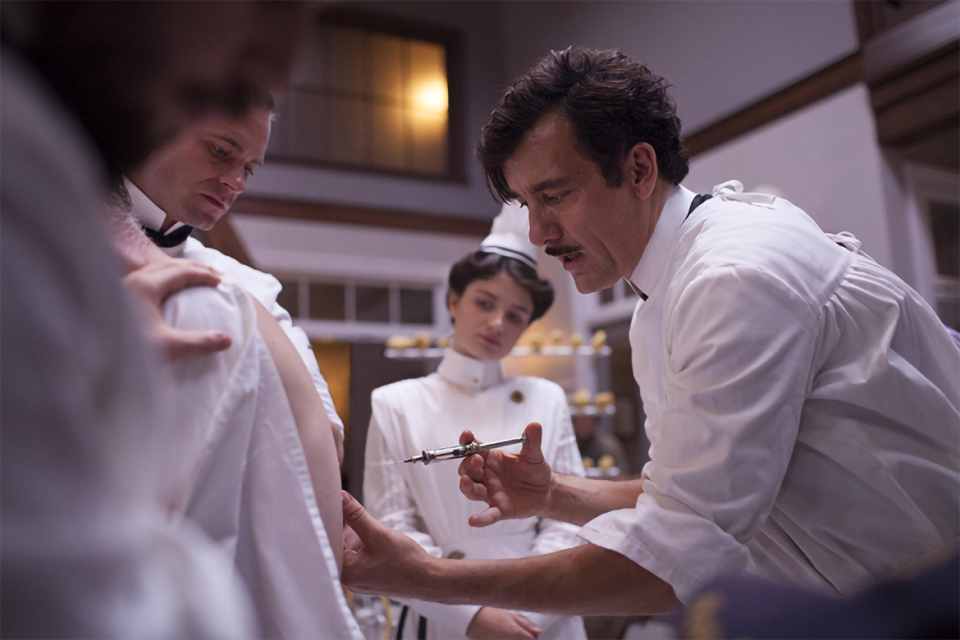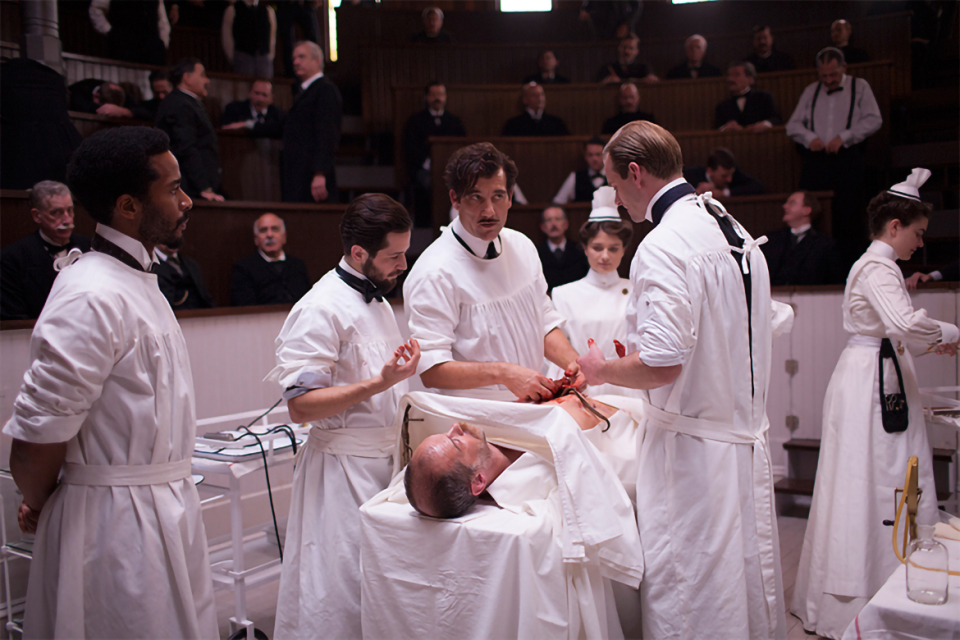The bloodbath that kicks off the first episode of The Knick is almost too much to stomach.
Blood gushes out of a patient's pregnant abdomen, running up the doctors' arms, splattering their surgical gowns and leaving crimson puddles on the operating floor.
Blood is only part of it. When out surgeon makes a clean Caesarean cut across the woman's belly to pull out her baby, the camera zooms in so close that viewers can see what queasily looks like real flesh and subcutaneous tissue, separating like a zipper.
The patient hemorrhages and dies. But that commonly happened. For the Knick (short for the Knickerbocker) is a fictional hospital in New York City circa 1900, when many major medical advances were being made but the surgical expertise taken for granted today was not yet developed.
"It is extremely accurate," says Michael Begler, who, with Jack Amiel, is a writer-executive producer of this period drama, which returns in October for season two.
Directed by Steven Soderbergh (also an executive producer), the Cinemax series fastidiously recreates the medical landscape as it existed 115 years ago.
The hand-cranked suction device that was used to siphon the woman's blood from the incision area, for example, is a clone of one used in 1900, as are the other medical tools. Even the doctors' movements mirror each surgical step as it likely would have been executed at that time — right down to how the nurse hands the doctor the scalpel.
"We tried to be as truthful to the medical procedures as we could," Begler says.
The writers pieced together much of the history through photographs from the archive of Dr. Stanley B. Burns, a New York City ophthalmologist who has collected more than 1 million historical medical photographs. Some directly inspired storylines.
Dr. Burns, for instance, showed them photos of Dr. Henry A. Cotton, a physician at the New Jersey State Lunatic Asylum at the turn of the century, who believed that insanity was caused by untreated infections. He would first extract all of a patient's teeth, as befalls a hapless patient at the Knick. If that didn't work, he would keep going: removing tonsils, gall bladder, spleen, colon and more.
Another subplot concerns the trials and errors of blood transfusions preceding the actual 1901 discovery of human blood types.
"We saw a photograph in passing as we were leaving Burns's office," Begler says, which showed an arm-to-arm operating room transfusion. "And we thought, 'How can we use this?'"
The hospital's brilliant, renegade top surgeon, Dr. John W. Thackery, portrayed by Clive Owen (also an exec producer), is partly based on Dr. William Halsted, a Johns Hopkins physician who pioneered important surgical techniques and introduced the latex surgical glove. He also developed a cocaine addiction — shared in the show by Thackery — from self-testing its anesthetic properties,
Before any scenes were shot, Owen and the other actors playing surgeons and nurses were put through medical boot camp. Using latex forms, Dr. Burns taught them to make incisions, suture and use forceps.
"We really do the surgery," Amiel says. The fake blood that is pumped through the latex bodies and body parts created by Fractured FX, is devised to spurt at different rates according to the patient's vital signs. Organs are exposed. Stomach-turning diseases displayed. Some of the actors have almost fainted or vomited from the too-real experience,
The 48,000 square-foot hospital set in Brooklyn has similarly been retro-styled according to archival photos.
Burns loaned the production rare pieces from his collection, including an eye-drop medication stand, pill boxes and a prescription from 1900. The set includes an "operating theater," a showmanship¬like arena typical of the times, where spectators would watch the doctors operate from tiered seating.
On the first shoot, though, Burns raised his hands and yelled for Soderbergh to stop. "I said, 'We have to change the audience. This is not the way it was. The older, distinguished doctors sat in the front row."
Street scenes are shot on the Lower East Side of Manhattan, where early-20th-century immigrants crammed into the walk-up tenements still in existence and diseases like typhoid spread.
"We had to put dirt down everywhere we shot," Amiel says, "because there were no paved roads. Every building, we had to remove the modern air conditioners."
Of all the medical procedures that the writers hauled out of obscurity, perhaps the most disturbing is a plastic surgery performed on the syphilis-ravaged nose of a once beautiful woman. Bacteria has eroded it to the cranial cavity. There is no nose left (thanks to modern-day visual effects).
Dr. Thackery grafts a flap of skin from her arm. But his 1900 know-how only goes so far. Her arm must be bound next to her nose until the flap takes hold and can be fully cut away, creating one of the most awkward surgical recoveries imaginable.
Begler and Amiel say there have been many discussions about how much blood and guts should be shown. "But we trusted Steven Soderbergh's aesthetic. We believed in it," Begler says. "And this is what the reality was."




















